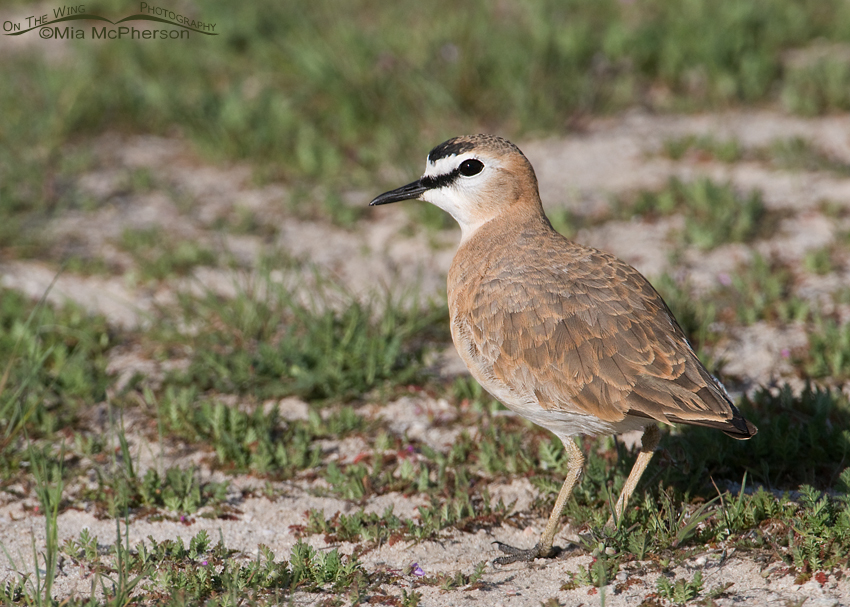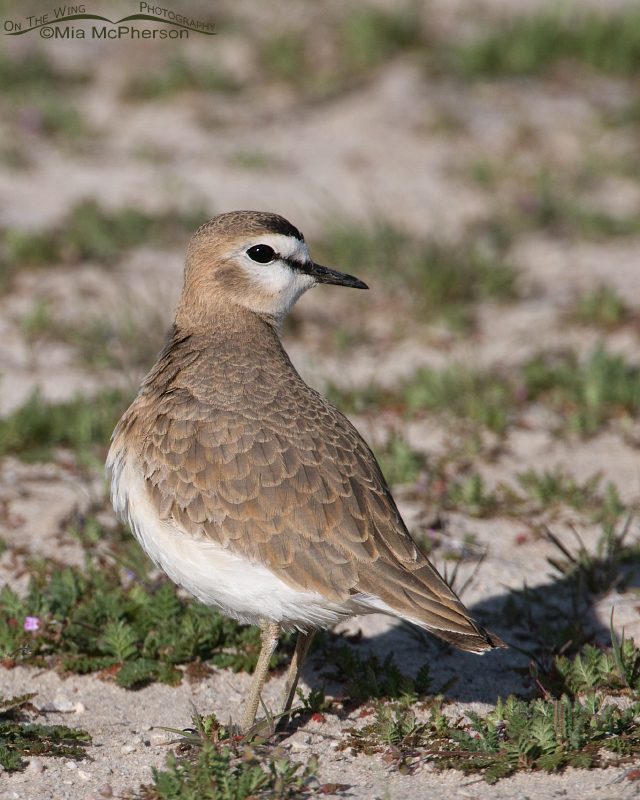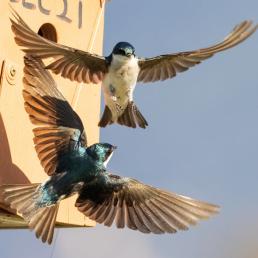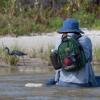

Join BirdNote tomorrow, November 30th!
Illustrator David Sibley and actor H. Jon Benjamin will face off in the bird illustration battle of the century during BirdNote's Year-end Celebration and Auction!
In the spring of 2013, I found two rare Mountain Plovers in the White Rock Bay area of Antelope Island State Park in the Great Salt Lake in Utah. And lately, I have been hoping to see them again.

The last couple of trips to the island have made me think of how various technologies used for birding and bird photography have advanced in the last 25 years. 25 years ago, anyone finding a rarity would have had to drive to the nearest phone to make a report to other birders. Today, we can use our cellphones to call or text a single person or email everyone who is signed up on a bird listserv. We can immediately notify them of a rarity, while we keep the birds in sight. Within minutes, people can be on the road, moving toward the reported rare bird. And they can easily stay in touch while they're on the road. Today, you can place a pin on a map in Google, and people can have their phones talk them through getting to those exact coordinates.
25 years ago, there weren't the bird listservs that we have today on the internet where birders can instantly “chat” about rare birds. Instead, they had phone trees or hotlines set up for getting in touch with other birders when rare birds were spotted. I might not even have been on that list, because I am a bird photographer, not a birder.

Quite a few local birders and bird photographers were able to see and photograph Mountain Plovers on Antelope Island last year, because of messages they received when someone on the spot hit the “send” button on a phone.
Not sure about a bird’s ID? We can search the internet rapidly or use apps to help with the ID. Want to hear the call of the bird? There are apps for that, too. We can pinpoint hot-spot locations for certain species by using eBird.
We can take photos with our smart phones and instantly share them on social media with the entire world, instead of waiting impatiently days and days for film to be developed. Photos of rarities can be viewed almost instantaneously across the internet, and before you even leave the site, the bird experts can weigh in on the identity.
I know that last year, if I had been using a film SLR camera, I wouldn’t have taken as many images of the two Mountain Plovers as I did because of the cost of film and developing. Today, we use digital cameras and can instantly see the results on the camera’s LCD screen. We can see if our exposure and sharpness are correct, and if they're not, make adjustments and photograph the birds again. We can take hundreds – or even thousands – of images and not even think about the cost of film or developing. And even though we might kick our own butts for the bad images, we can immediately take better ones. Our cameras have small computers that “talk” to the lenses, and some DSLRs can send the images to our smart phones wirelessly, for uploading to the internet.
Yes, compared to 25 years ago, the technology used for birding and bird photography today is simply amazing.
###
This post originally appeared on Mia McPherson's blog, On the Wing Photography, April 3, 2014.
Listen to a BirdNote show with Mountain Plovers, Ecosystem Engineers on America's Serengeti.

